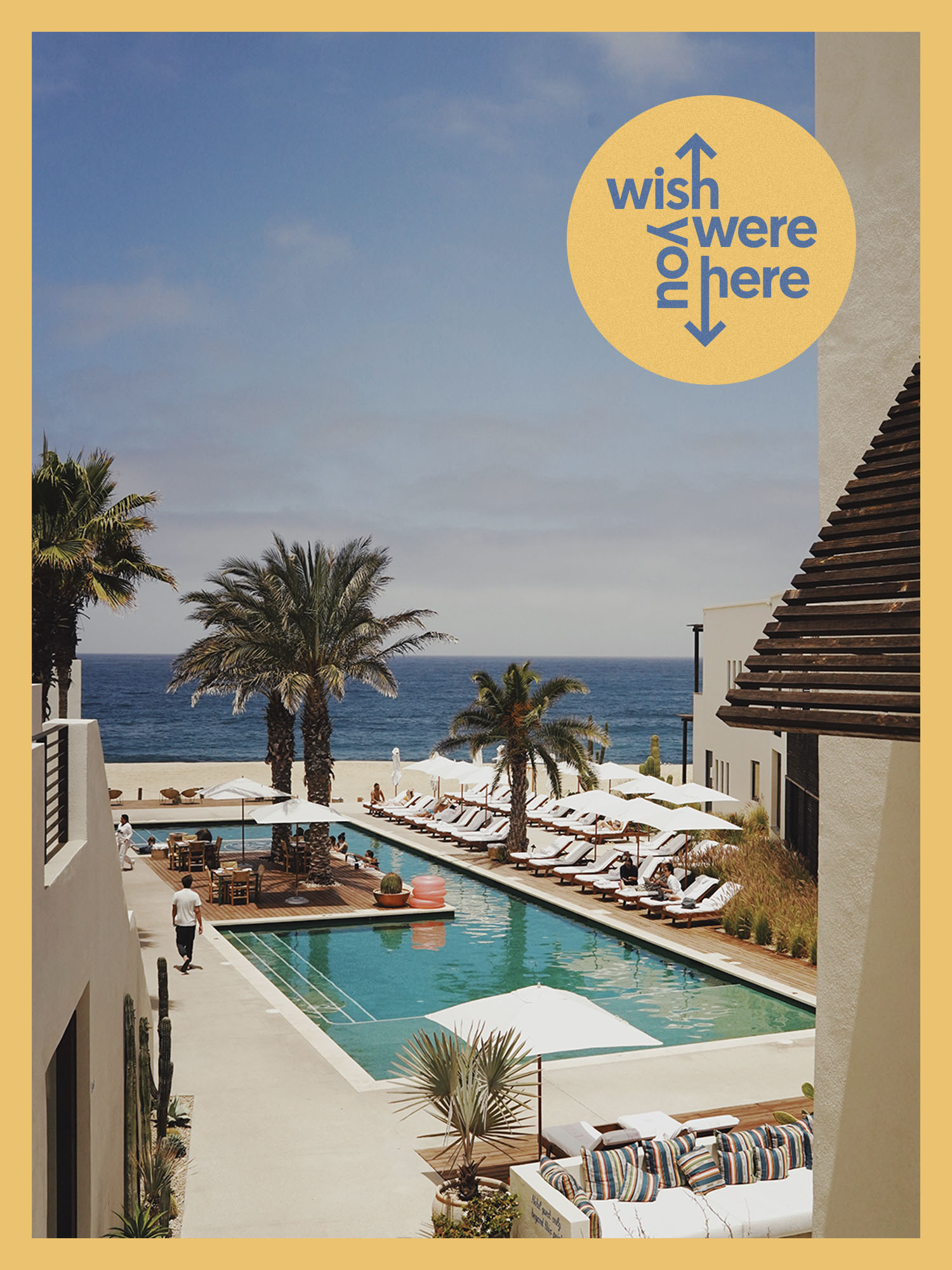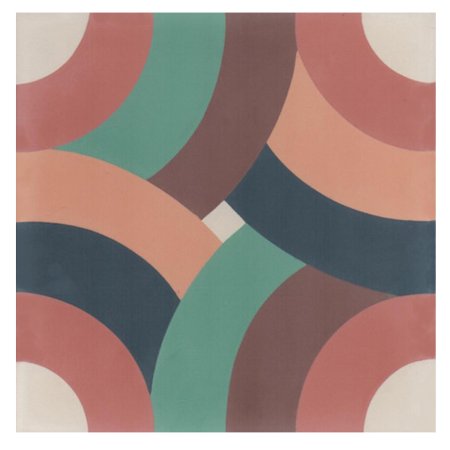We may earn revenue from the products available on this page and participate in affiliate programs.
It makes perfect sense that Tenaya Hills, senior vice president of design and development at Bunkhouse Group, would choose Hotel San Cristobal’s color scheme the way she did: “Growing up in Southern California, I’d hear stories from my dad and my uncles about surfing trips to Baja in the ’60s and ’70s, the Baja 500, and that romance of exploring Baja in a VW,” she says. Then, in her 20s, she started to explore the area herself, and that’s when she found hue inspiration. “The color palette reflects those beautiful sunsets, the seemingly endless blue ocean, the soft yellow sand, both the muted and bright pinks of Mexico, the green glow of the cacti at dusk, and, of course, thoughtful splashes of bold and bright colors here and there—with a ’70s Polaroid vibe.”

That hazy energy doesn’t stop with the palette. It extends into the hotel’s details, namely the cement tile that covers the showers, lobby floors, restaurant, library, and open-air yoga and dining area. The swirly pattern—by New York–based company Amethyst Artisan—is so recognizable that it’s become an #IYKYK Instagrammable moment. “We knew it was a strong statement, so how to use it was the main question,” she says. “To do the entire guest room floor would be too much—and wouldn’t be very calming—so we decided to go with a stamped concrete in the same pattern for the floors.”

To work the standout tile into your own home, Hills recommends choosing a small area (like a bathroom, foyer, or backsplash) for two reasons: One, it makes a big impact even in small doses, and two, you’ll still have money left over in your budget for furniture, fabrics, or art. The only place she wouldn’t put it? On a headboard, but that’s more of a personal preference, she says.

Throughout the hotel, Hills complemented the tile with simpler moments, such as the minimal concrete plunge pools—”You certainly don’t want to compete with the amazing view of whales swimming by,” she says—which are new to the property. Most of the other details are local to the area: Chairs, chaise longues, and tables are by Mexa, and all the ceramics are by Suro Ceramica.

And in the new outdoor restaurant, Cosecha (Spanish for “harvest”), Paige Henney, the director of design Bunkhouse Group, had another brilliant idea for the hotel’s shoreside look. To shade the tables, bound palo de arco sticks, which are native to Baja, create a kind of thatched roof. But you don’t need to live in Mexico to get the look. “To re-create this at home, the most efficient option would be fabricating or buying a simple pergola and installing an outdoor bamboo or reed shade across the top of the beams,” she suggests. “You will get a very similar shade effect that lets light through while providing relief from the heat.” Now no matter where you are, you can bring that sun-dappled, groovy vibe home with you.


